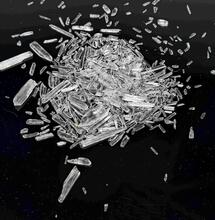Spring Tonics

Spring is the time of year when the Spark of Life returns to the planet.
Spring is the time of year when the Spark of Life returns to the planet.
Springtime is here! It is time for life to emerge from the hidden regions of existence and return to activity on earth. The winter season is a time for rest and assimilation of the harvest, the bounty we hopefully acquired from our labors of the past year. Our bodies respond, like other organisms, to the circadian rhythms of the Spark of Life. Life is the result of the energetic play between the sun and Earth. As the Earth returns to a closer orbit around the sun, life will flourish.
Gardeners know that springtime is when a plant needs nutrition to fuel its labors in the coming yearly cycle. Wise humans in our past have also used this time for a 'spring tonic'. These tonics often have two aspects; one is a gentle cleanse to remove lingering impurities accumulated during the slower metabolism and activity in winter. Gentle cleansing is necessary in order to not place undue stress on the re-awakening body systems.
However, the spring tonic's primary action is one of 'tonification' (a therapy that nourishes and restores the body when weak or depleted), in order to replenish and build stores for growth during the coming year, as the tonics encourage growth and metabolism. There are tonics you can take now that will nourish and revitalize your systems in preparation for growth in the coming year.
Spring tonics are often drawn from foods that are abundant during springtime. Asparagus is one of these foods. Rich in vitamins and nutrients (vitamins A and C, folic acid and potassium), asparagus also contains asparagine, an amino acid with diuretic actions.
|
Easter eggs celebrate fecundity, and are a rich source of protein. |
Eggs are another food that strengthens our bodies, and are also associated with springtime. Full of nutrients, intended to support the birth of life they hold the potential for, eggs are rich in vitamins and minerals. The fat-soluble vitamins are especially prevalent, notably vitamins A and E. Eggs are also rich in oils, including omega-6 and omega-3. The 100 mg of cholesterol in eggs is negligible in light of the 1.8 grams produced daily by the body for its internal needs.
Eggs also contain protein; in fact, egg protein is the quality standard against which other protein foods are measured. Eggs provide enzymes and other naturally occurring substances that have beneficial effects on nourishing the renewed growth of the body after winter. Eggs even encourage healthy and silky hair growth when eaten or applied externally - no need to waste money on commercial, chemical conditioners. Try conditioning with an egg once or twice a week, before you shampoo.
One of my favorite tonics is Radix Astragali (Astragalus root). The Chinese herbalists call this Huang Qi. 'Huang' also means 'yellow', and refers to the yellow hue of the more potent specimens when dried. This herb is traditionally used as a tonic for the digestive system and lungs, producing more energy for the body due to the improved function of these organ systems. Astragalus also strengthens immunity. Traditional Chinese medicine recognizes the immune system as a protective energy, naming it Wei Chi. Astragalus is a tonic for this defensive energy in the body, and can stimulate the body to guard against summer colds and flu.
|
Yellow Astragalus roots are preferable, and available from Chinese herb shops. |
Radix Astragali is also a mild diuretic. This helps the body in the removal of accumulated toxins. The action of Astragalus in the body is referred to as 'alterative', meaning it does not force the body in one direction but helps the body create homeostasis. (Alterative medicines help the body achieve its optimal health potential.)
Astragalus is a gentle herb that can be used in cooking. This root is included in soups or stuffed into a chicken before roasting, imparting a somewhat sweet flavor. It is not recommended to ingest the raw herb in capsules. The proper daily dose of the root is 15 to 30 grams, or between half- and one ounce, which can be too much fiber to properly digest. Boil the roots in three cups of water for twenty minutes, or use a concentrate. Paradise Herbs is a manufacturer of reliable herbal concentrates.
Dandelion is another herb associated with spring tonics. Dandelion is a member of the Asteraceae family that flourishes in the springtime. The root, green leaves and yellow flowers can each be used as a tonic and cleanser. DO NOT use the dandelions found in your lawn or around civilization. Man has contaminated his lawn with excessive fertilizers and pesticides, so do not consume anything found growing in your average yard! Dandelions grow wild in nature and these would be suitable specimens for consumption, although the flower is also available in herb stores.
|
Dandelions growing wild are safe to eat. |
Dandelion is primarily a 'detoxifier' used to remove the toxins accumulated by the sedentary life during winter. There are not many of us who are now completely sedentary, but our bodies still function on the clocks and rhythms of our ancestors. Dandelion is a diuretic and liver stimulant, and also reduces swelling and fluid retention. The plant encourages the liver to detoxify the metabolic by-products that have been stored in the body, when lower activity levels did not produce the perspiration or elimination that occurs during active summer months.
Removing these toxic pools can help with symptoms of inflammation, which can sometimes express itself through painful joints, irritable bowels or symptoms related to other excretory organs in the skin or lungs. These organs stagnate during winter. Dandelion tea is used as a hay fever remedy when the lungs and sinuses are inflamed. In some cases, toxins create skin eruptions - acne and hives are examples - and dandelion can help reduce these symptoms.
Dandelion stimulates the flow of bile, cleansing and regenerating the liver. This allows for the regeneration of the entire body. Because of this, dandelion can help the body rehabilitate after alcohol abuse, and has been used as a treatment for alcoholism.
Dandelion also helps with the digestion and removal of fat from the body. The root can be peeled and boiled as tea, or roasted like a carrot. The leaves and flowers can be used in salads; they are slightly bitter, similar to arugula. In salads, they are mixed with other lettuce leaves for balance - butternut lettuce is a good example. Dandelion leaves sauteed with onions in coconut oil will lose their bitterness and can be combined with chicken or fish for a satisfying, healthy meal.
Best of health to everyone!



